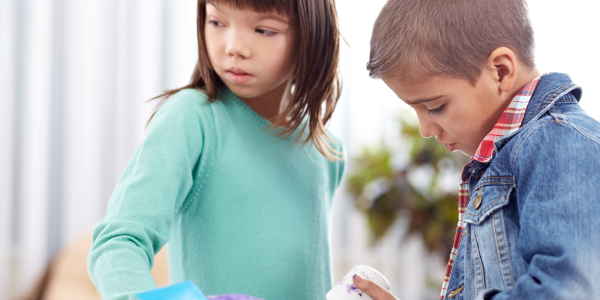Introduction to Athina Ntoulia’s “Tapping Playful Research to Create an Inclusive Classroom Community”

You are here
Teaching and teacher research are team sports. Athina Ntoulia’s “Tapping Playful Research to Create an Inclusive Classroom Community” tells of efforts to support Morgan, a third grader, in becoming a successful member of her classroom community.
As Athina takes the lead in these efforts, she does not do so alone; she is part of a team focused on supporting Morgan and his classmates. This team involves her coteacher, her administrators, a consulting psychologist, Morgan’s family, the children in the class, and her teacher research study group. As Athina puts it, the effort to support Morgan involved “pretty much everyone.”
Importantly, this “everyone” included members of Athina’s teacher research study group. Each year at Athina’s school, the International School of Billund (ISB) in Denmark, teachers have the option to join a study group that meets monthly to discuss questions of playful learning. The year Morgan was in her class, Athina brought the question of how to support him to her study group, using the tool of pedagogical documentation to ground conversations with her colleagues and to hear new perspectives. (Those interested in learning more about Playful Participatory Research, the approach used by teacher research groups at ISB, can visit pz.harvard.edu/resources/playful-participatory-research-an-emerging-methodology-for-developing-a-pedagogy-of-play.)
The topic of inclusion that Athina explores in this piece—how to create classroom cultures where all children thrive—is particularly ripe for investigations by teacher researchers. This is because inclusion is complex. We have some excellent principles and frameworks for inclusive practices, such as the “Early Childhood Inclusion” position statement from NAEYC and the Division for Early Childhood (2009); the division’s recommended practices (DEC 2014); and guidelines for anti-bias education (Derman-Sparks & Edwards, with Goins 2020). Yet making inclusion work always involves creating something right for a particular child, in a particular classroom, with a particular set of classmates. This process is inherently research—getting to know the child, working with their family, collaborating with colleagues, and observing to see what works and what does not.
In the article that follows, you will read about an individual teacher who used her team to help a specific child learn while simultaneously creating a classroom climate that can benefit other teachers and their students. You may be inspired by her findings and by her process. Enjoy reading this example of how teaching and teacher research become more powerful when in collaboration with others.
Copyright © 2023 by the National Association for the Education of Young Children. See Permissions and Reprints online at NAEYC.org/resources/permissions.
References
Derman-Sparks, L., & J.O. Edwards. With C.M. Goins. 2020. Anti-Bias Education for Young Children and Ourselves. 2nd ed. Washington, DC: NAEYC.
DEC (Division for Early Childhood). 2014. “DEC Recommended Practices in Early Intervention/Early Childhood Education.” dec-sped.org/dec-recommended-practices.
DEC (Division for Early Childhood) & NAEYC. 2009. “Early Childhood Inclusion.” Joint position statement. Chapel Hill, NC: The University of North Carolina, FPG (Frank Porter Graham) Child Development Institute. naeyc.org/sites/default/files/globally-shared/downloads/PDFs/resources/position-statements/ps_inclusion_dec_naeyc_ec.pdf.
Ben Mardell, PhD, is a researcher at Project Zero at the Harvard Graduate School of Education. [email protected]
Megina Baker, PhD, is a program developer for the Department of Early Childhood in the Boston Public Schools. Megina has been an early childhood educator, teacher educator, and education researcher with specializations in playful learning and teaching multilingual learners. [email protected]